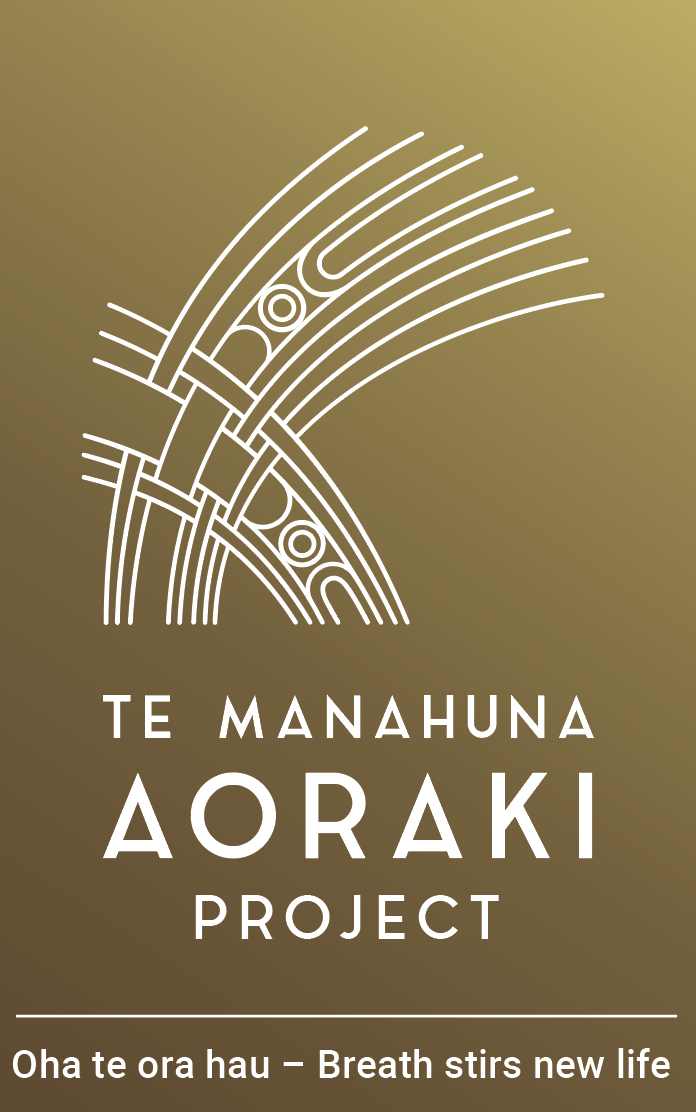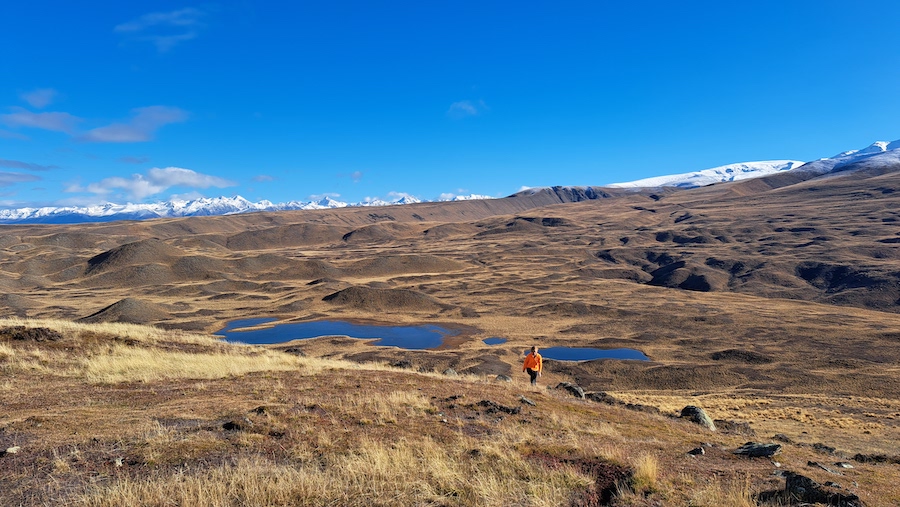Our ambitious trial to eliminate five introduced pests (possums, Norway rats, rabbits, hares and hedgehogs) from a 1,500 site on Glenmore Station has had some encouraging early results.
Glenmore Station is a working high country farm, which is home to kakī/black stilt, and habitat for many rare and threatened ephemeral wetland turf plants. The approach we develop here, working alongside the farmers, will help us scale up predator elimination across more East Coast dryland ecosystems in the project area over time.
A network of over 180 trail cameras was established across the site before the first phase of the aerial pest removal operation, which was completed in early April 2023. The results so far have been very encouraging, with possums completely removed, just one rat detected[1], and a substantial knock-down of hedgehogs, rabbits and hares.
Possums, rats and hedgehogs eat native chicks, eggs, lizards, skinks, wētā and other rare insects. Rabbits and hares are a significant agricultural pest, and a greedy browser of sensitive native plants. They are also a major driver of predator populations in this environment, so we need to remove them in order to successfully eliminate the predators.
We began with a low starting population of possums in the site, and none were detected for almost four months after the initial aerial operation. We have recently detected two possums on camera, which are believed to have entered the site after the operation and will soon be targeted for removal.
Initial camera footage showed that the operation also appears to have substantially reduced hedgehogs. The surviving hedgehogs are now hibernating, so we will confirm the effectiveness of the operation and target any remaining individuals in spring 2023.
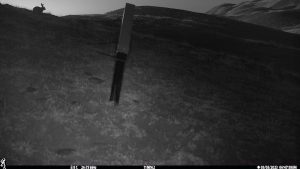 Perhaps most encouragingly of all, the aerial operation achieved a substantial knock-down of both rabbits and hares – an estimated 96-98% of the resident population! The population was surveyed before, and after, the operation using both camera detection data and thermal drone surveys. We estimate there were over 3,000 rabbits and 90 hares on the site at the start of the trial. The operation appears to have removed all but a very small number of hares, and reduced the rabbit population to less than 200.
Perhaps most encouragingly of all, the aerial operation achieved a substantial knock-down of both rabbits and hares – an estimated 96-98% of the resident population! The population was surveyed before, and after, the operation using both camera detection data and thermal drone surveys. We estimate there were over 3,000 rabbits and 90 hares on the site at the start of the trial. The operation appears to have removed all but a very small number of hares, and reduced the rabbit population to less than 200.
New rabbit hunting technique increasing efficiencies “ten-fold”
Over the last few months we have been targeting the few remaining survivors using ground-based methods such as hand-laid pindone, and a novel new tool – thermal drone-assisted ground hunting.
This night hunting method uses a drone with a thermal camera on board to find surviving rabbits or hares in the site. Once a rabbit or hare has been spotted, one of our team members communicates with a shooter on an LUV using a radio earpiece, to tell them where the animal is. The shooter then travels as quickly and safely as they can to the animal’s location. Once close enough to identify the animal, they stop and shoot it.
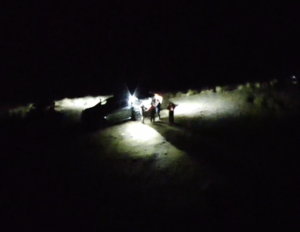
Ranger Geoff Woodhouse says while thermal drone-assisted night hunting isn’t new, he hasn’t heard of it being used to target rabbits before and it is increasing efficiencies ten-fold.
“Rabbits don’t see a drone as a threat so it is a really efficient way to spot and target them. What was quite enlightening was when we put the drone up, pretty much every animal the drone found, we got. Nothing was left behind to be wary next time. That to me is a really big positive,” he says.
The results so far have been impressive with only an estimated six rabbits currently left on the site. 78 rabbits and hares were removed during the first thermal-assisted ‘sweep’ of the site, which was completed over 10 nights. We estimate that this was about 70% of the remaining population.
During the second sweep, 16 rabbits were removed. By the third sweep, just 9 rabbits were spotted by the drone and successfully removed. The last resident hare is believed to have been removed on the 9th of July, with only a small number of suspected invaders detected and removed since then.
Not only is this method proving very effective, it is also extremely efficient. The drone is able to search a large area, and in the right conditions it takes an average of five minutes for the hunters to remove a rabbit or hare once it has been spotted.
Winter has been a good time of year to trial thermal drone-assisted night hunting. Temperatures range from 0 to minus 10 degrees, and the cold ground enhances the thermal ability with a heat signature really standing out from several hundred metres away.
Interestingly, we have only seen two rabbits go into burrows – they seem to prefer attempting to outrun the drone. The team is also investigating how to manipulate the movement of rabbits to their advantage. The drone can be used to herd rabbits towards a hunter, putting the animal where we need it.
“We have only been using thermal drone hunting since June and as we modify our approaches, we continue to increase effectiveness and efficiency. It’s proving to be a great mop-up tool that looks to be key to eliminating rabbits on this kind of farmland landscape,” says acting project manager Julia Gibson.
What next?
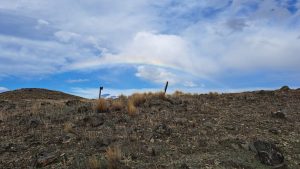
We have just completed the fifth sweep of the site. We are also using hand-laid pindone to target any rabbits and hares that our hunters or cameras have detected but been unable to shoot.
We have been very grateful for the support of the Glenmore Station landholders, and their willingness to work around any disruption.
Once rabbits and hedgehogs are eliminated from the site, rabbit fencing should significantly slow invasion – but we do expect some reinvasion from all target pests. When we detect them through our camera network, we will quickly respond to prevent them re-establishing.
This trial is supported by our partners Toitū te Whenua – Land Information New Zealand and Predator Free 2050 Limited. The multi-species approach uses both aerial and ground-based methods to target all pests in the site. It builds on the successful predator eliminations developed and implemented by ZIP in Predator Free South Westland.
[1] Only one rat has ever been detected within the 1,500 trial site – caught in a trap between mid-April and mid-June, near the boundary and close to productive farmland, where we would expect rats to be at relatively high abundance. Rats are known to be present within the wider area, and are therefore a target of the multi-species approach we are developing for this environment
Photos : Trail cameras and Doug Rands
